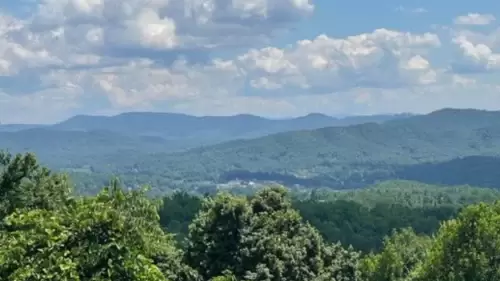Live HD Webcams in The Great Smoky Mountains
Watch live streaming webcams in the Great Smoky Mountains National Park mountain range on the Tennessee–North Carolina border. Called the Smokies due to the ever-present morning fog, this mountain range is world renowned for the diversity of its plant and animal life, the beauty of its ancient mountains, and its history of southern Appalachian mountain culture. There are many great hotels, cabins, and resorts to stay at in the Smokies on TripAdvisor. Visit Smoky Mountain Knife Works, a sprawling showroom for knives, guns & outdoor gear featuring taxidermy tableaux & artifact displays. Smoky Mountain Knife Works has over 12,000 knives.
One of the most popular areas in the park, the Cades Cove valley is known for its plentiful wildlife, including white-tailed deer, black bears, turkeys, mountain lions, raccoons and other animals.
Visitors: Over 14 Million annually
Information about the Smokies
This area is part of the larger Appalachian Mountain chain. Furthermore, it is characterized by its rolling hills, lush forests, and a variety of wildlife. The region is particularly famous for its mist-covered peaks. This creates an unmatched visual experience for tourists. The mountains are also home to a vast array of plant species.
The park encompasses over 800 square miles of protected land. Furthermore, it offers a diverse range of ecosystems. These include temperate rainforests to alpine meadows. Visitors can explore more than 800 miles of trails, including a portion of the famous Appalachian Trail.
The park’s commitment to preserving its natural and cultural heritage is evident in its numerous historical sites, including old homesteads and remnants of early settlements.
The park’s rich ecosystems are not only a haven for wildlife but also a perfect backdrop for photography and nature study. For those interested in history and culture, the area is home to preserved historic sites, including old homesteads and churches, which offer a glimpse into the lives of early settlers and the region’s heritage.
History
Indigenous peoples, including the Cherokee Nation, thrived in the region. They used the abundant resources for sustenance and spiritual practices. The arrival of European settlers in the 18th century marked a significant shift. Moreover, these newcomers began to establish farms and communities. This led to a clash of cultures and often violent conflicts over land and resources.
As the 19th century progressed, the Great Smoky Mountains became a focal point for both economic development and conservation efforts. The logging industry flourished, driven by the demand for timber. The down side was it led to extensive deforestation and environmental degradation.
However, the growing awareness of the need to preserve the natural landscape prompted a movement towards conservation. In the early 20th century, influential figures such as John D. Rockefeller Jr. played pivotal roles in advocating for the establishment of national parks, culminating in the creation of the Great Smoky Mountains National Park in 1934.
This park was the first in the United States to be designated as a national park. This was made possible through private donations and public support.
Today, the Great Smoky Mountains National Park stands as a testament to the successful preservation. It is renowned for its biodiversity. Moreover, it features a wide array of plant and animal species. The park attracts millions of visitors annually. Educational programs and interpretive centers within the park help to inform the public about the cultural and natural history of the area.
Nearby Blue Ridge Parkway Cams
November 16, 2025
September 17, 2025
September 17, 2025
July 4, 2025
March 7, 2025
February 27, 2025
February 21, 2025
August 30, 2024
October 20, 2023
July 22, 2022
June 24, 2022
February 16, 2022
February 15, 2022
January 24, 2022
January 24, 2022
June 10, 2021
May 23, 2021









